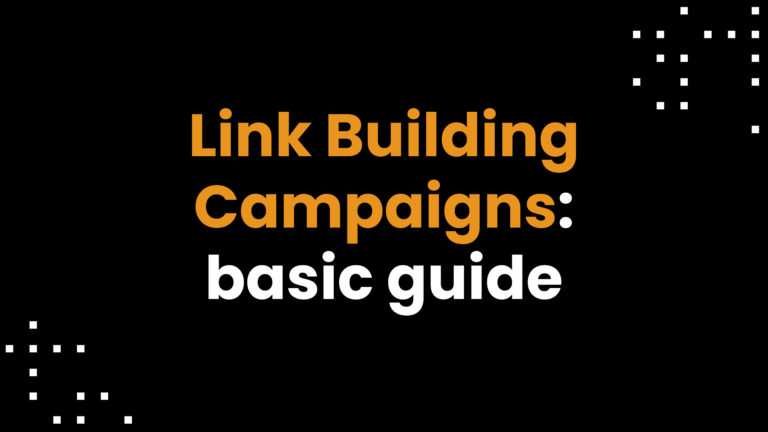Thanks to the SEMrush controversy, SEO tactics have come into sharp focus.
We are discussing the color of your SEO hat once again.
Are you a white hat, black hat, gray hat, or you don’t have a hat at all? ????
The hot debate revolved around the ethics of buying links and guest posting. Here’s a piece of the action in case you missed it.

Source: Twitter
I’m not here to throw stones. This is a great opportunity to talk about the fundamentals of SEO writing.
What does it take to write content that ranks organically without resorting to shady tactics? Unfortunately, many brands make fatal mistakes and fail dismally.
That’s what we want to fix today.
Here are 5 SEO writing mistakes brands often make and how to remedy them.
Let’s jump right in.
#1. Taking a search-engine first approach
SEO writing is all about writing for search engines, right?
Kinda.
It’s easy to understand why people fall into this trap. After all, SEO means Search Engine Optimization so they instinctively put search engines at the heart of the process. Unfortunately, this approach produces disastrous results.
For starters, you’ll end up keyword-stuffing your content.
The result?
Unnatural robotic-sounding copy nobody wants to read. Plus, Google will penalize you for trying to game the system.
Search-engine led writing produces content like this.
“Keyword stuffing is an old school SEO tactic. But many brands still love to do keyword stuffing because they think keyword stuffing will help them rank. Keyword stuffing makes you sound like an idiot. Keyword stuffing is an instant turn-off. Clever Google spiders can now pick keyword stuffing and come down hard on it. Stop keyword stuffing today!”
Oh boy, I had a hard time writing that.
So, what must you do then?
Realize that ultimately it’s about people, not search engines. Search engines are there to serve people by providing them with the best search result that’ll meet their needs.
The Fix: Write for people primarily, and then tweak for search engines later.
When writing your first draft focus on usefulness, not keywords.
Once you are done circle back and optimize for keywords.
I know this works because when I started 6 years back, I knew nothing about search engines but I wrote several front-page ranking posts. It’s because in my posts I tried to help readers as much as I could by producing the best post on the subject.
Looking back, I see I naturally included most of the keywords. Importantly, I helped people and Google liked it and rewarded me for it.
While keyword stuffing is bad you must still get your keyword density right. There are plenty of tools to help you do that. GDoc SEO Assistant is a handy free Google docs add-on.

The Semantic Quality density feature helps you keep your keyword frequency in check. You get a red flag when you’ve over-optimized your content so you whittle down your keyword usage.
Take a people-first approach to SEO with conversational copywriting and you’ll do just fine. Let the man lead the machine, after all, man created the machine.
#2. Being obsessed with longer content
Many mistakenly believe long content always ranks higher than shorter content.
The result?
A lot of long-form fluff as people write to meet high word counts, not reader needs. People misinterpret popular studies on what it takes to rank.
Remember this simple equation, it’ll save you a lot of grief.
More words ≠ higher rankings
It’s about value, not volume.
Let’s say you want to rank for ‘how old is Barack Obama’, ridiculous I know. Here’s what you’ll see on the first spot of the SERPs.

Imagine writing an ultimate guide on Obama’s age. You’d waste precious time for nothing and Google won’t rank your mega post because all people want is a straightforward answer:
58 years.
That’s it.
Anything else is overkill. It’s like getting rid of a mosquito by shooting it.
The Fix: Focus on meeting the searcher’s needs as best as you can using as many words as it takes and no more.
Look out for user needs, not your word count. Some queries don’t lend themselves to in-depth answers.
Once you’ve addressed all of the user’s needs, stop. Don’t write a single word more.
Yes, you should look at competing posts for guidance on how long your post should be. But don’t be preoccupied with length.
A plea to content managers: don’t tie your writers to a rigid word count, it doesn’t help anyone. Give them the leeway to write more or less as long as the piece provides full value for readers. If you create long form content make sure every inch of the article is top notch like this guide on law firm SEO. You will see that the post is not only well optimized for SEO but is also very engaging towards the target audience, lawyers.
#3. Focusing on high-volume keywords
Let’s admit it.
High-volume keywords are sexy.
If you manage to rank for them you have the bragging rights. You can show off your big numbers. Like, ahem, this post I wrote for Smart Blogger.

Decent results, huh? (You can read the full seo writing case study to see how I did it.)
But targeting high-volume keywords doesn’t work for the standard sites.
Here are three reasons this is so.
- High-volume keywords are highly competitive so you’ll have a hard time trying to rank for them.
- It takes longer to rank for a highly competitive term if you are an average site.
Even bigger high DA sites have to bring their A-game to win.
Let’s put this into perspective. According to Ahrefs, assuming you are doing everything right and have a decent Domain Authority, it can take you 2-12 months to rank in Google Top 10.

I hate to be the bearer of bad news but the truth is if you are targeting a crowded keyword, you’ll take even longer.
Ouch.
- Drive massive traffic but typically have lower conversion rates.
Targeting dog-eat-dog keywords at the top of the funnel draws many eyeballs to your content. But you’ll get fewer conversions because people at the top of the funnel are at the beginning of the customer journey. Plus, if you decide to buy traffic it’ll cost you more because everyone is bidding for them.
The Fix: Target long-tail semantically related keyphrases in one piece to improve your chances.
Focusing on long-tail keywords enhances your chances of ranking. The longer the keyword the more descriptive and accurate the searcher becomes in articulating her needs. Better still, the longer the keyword the higher the purchase intent.
While the traffic is low, conversions are high.
This graphic from Sherpa Marketing explains it well.

So, then long-tail keywords have:
- Less traffic but it’s of high quality.
- Low competition and so you have higher chances of ranking for them.
- Higher conversions because searchers know exactly what they want.
- Cost less if you decide to buy traffic because few people are bidding for them.
Reach for juicy low hanging long-tail keywords.
#4. Failing to format for easy consumption
Small hinges turn big doors.
Readability may sound insignificant but it’s crucial for SEO success.
What use is your epic post if people can’t read it? And, if people can’t read your post they’ll quickly leave and increase your bounce rate. Once Google sees people coming to your site and straight out, you won’t be rated highly.
It’s surprising how something as basic as readability trips up most small businesses to this day.
The Fix: Give readers a good page experience by structuring your content well among other things
In Google’s own words:
“Great page experiences enable people to get more done and engage more deeply; in contrast, a bad page experience could stand in the way of a person being able to find the valuable information on a page. By adding page experience to the hundreds of signals that Google considers when ranking search results, we aim to help people more easily access the information and web pages they’re looking for, and support site owners in providing an experience users enjoy.”
Your content must be:
- Easy to navigate.
- Pleasurable.
- Distraction-free.
Below is a quick summary of how to format your posts for delightful consumption that fuels understanding :
- Organize your content around a clear hierarchical structure (H1, H2, H3, etc.)
- Use subheads every 250 words or so to break your posts into smaller chunks.
- Use short sentences and paragraphs (no more than 4 lines).
- Let your words breathe—a great deal of white space makes your post look readable, unlike dense text which looks threatening.
- Go through long lists using bullets and numbers.
- Include visuals to aid understanding and break up walls of text.
Finally, don’t block your content with humongous pop-ups. They result in a bad page experience for readers. Google warns about this in particular in their page experience guidelines:

Organize your content smartly for high reader engagement.
#5. Banking on poorly written content
The content beast has a ferocious appetite.
Satisfying it soon becomes a handful.
As a result, companies end up:
- Giving writing duties to any team member who is available even if they don’t have the talent for it.
- Outsourcing writing to the cheapest writer on the market.
- Insisting on writing their content even if they don’t have the time nor expertise for it.
Inferior content is the inevitable result.
These days you can’t succeed with low-grade content. The content bar is sky-high, you get dizzy just looking at it.
The Fix: If you want to succeed with SEO marketing, either you learn copywriting and do it yourself or invest in superb writers.
If you use all these tips, you stand a good chance of producing content with the potential to rank on the front page. But, if you don’t see results, do a full scale SEO audit to diagnose deeper issues.
SEO Writing: Getting Tougher By the Day but the Rewards Are Worth It
Yes, SEO writing is not as easy as it was, but it’s still doable.
As long as you:
- Focus on people, not search engines.
- Push value, not volume.
- Target long-tail keywords, not short ones.
- Format content intelligently.
- Invest in brilliant writers, not lousy ones.
Then you’ll reap the bumper recurring rewards.
Author Bio

According to his cheeky wife, Qhubekani Nyathi aka The Click Guy is irresistibly handsome. He’s an offbeat certified SEO copywriter who writes zingy long-form content that ranks, drives traffic, and leads for B2B SaaS, Marketing, and eCommerce companies. He contributes to prestigious blogs like Search Engine Watch, Crazy Egg, Clickz, and Smart Blogger.








